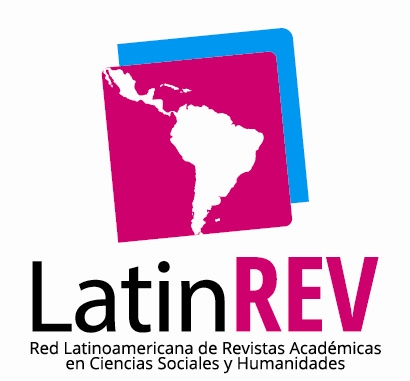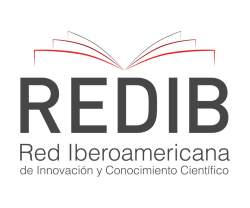Desempeño de Instrumentos Predictores de Riesgo para Desarrollar Diabetes Mellitus Tipo 2 en Población Adscrita a una Unidad Médica de Primer Nivel
Resumen
Antecedentes: La Diabetes Mellitus es un problema de salud pública, se han desarrollado varios instrumentos para predecir la probabilidad de desarrollar la enfermedad. Los cuestionarios FINDRISC y de la (ADA) Asociación Americana de la Diabetes estiman el riesgo considerando distintas variables. Recientemente se validó el cuestionario LA-FINDRISC para población latinoamericana, que considera medidas antropométricas para población latina. En México, no hay estudios que validen otros instrumentos de riesgo en población mexicana ni que incluyan sus características demográficas por lo que es vital importancia establecer cuál de estos instrumentos es mas eficaz. Objetivo: El objetivo en la presente investigación fue evaluar el desempeño de Instrumentos predictores de riesgo para desarrollar Diabetes Mellitus tipo 2 mediante un estudio transversal, descriptivo y analítico en derechohabientes de la Unidad de Medicina Familiar No. 61 del IMSS OOAD (Órganos Operativos de Administración Desconcentrada) Veracruz, Sur. Se le aplicó a 385 pacientes los cuestionarios: FINDRISC, ADA, LA-FINDRIC. Se les tomó glucosa en ayuno para validar diagnóstico. Se evaluaron los instrumentos mediante sensibilidad, especifidad, Area bajo la curva, Índice de Youden, razon de verosimilitud y Curvas ROC. Resultados: LA FINDRISC obtuvo un AUC 0.766 con una sensibilidad de 83.3% y especificidad de 62.5%, Indice de Youden 0.491, por lo que se considera la prueba más eficaz.
Descargas
Citas
American Diabetes Association. (2021). 2. Classification and diagnosis of diabetes: Standards of Medical Care in diabetes-2021. Diabetes Care, 44(Suppl 1), S15–S33. https://doi.org/10.2337/dc21-S002
Aschner, P., Buendía, R., Brajkovich, I., Gonzalez, A., Figueredo, R., Juarez, X. E., Uriza, F., Gomez, A. M., & Ponte, C. I. (2011). Determination of the cutoff point for waist circumference that establishes the presence of abdominal obesity in Latin American men and women. Diabetes Research and Clinical Practice, 93(2), 243–247. https://doi.org/10.1016/j.diabres.2011.05.002
Carrillo-Larco, R. M., Aparcana-Granda, D. J., Mejia, J. R., & Bernabé-Ortiz, A. (2020). FINDRISC in Latin America: a systematic review of diagnosis and prognosis models. BMJ Open Diabetes Research & Care, 8(1), e001169. https://doi.org/10.1136/bmjdrc-2019-001169
Ceriello, A., & Prattichizzo, F. (2021). Variability of risk factors and diabetes complications. Cardiovascular Diabetology, 20(1), 101. https://doi.org/10.1186/s12933-021-01289-4
Cuevas M., A., & Alonso K, R. (2016). DISLIPIDEMIA DIABÉTICA. Revista médica Clínica Las Condes, 27(2), 152–159. https://doi.org/10.1016/j.rmclc.2016.04.004
Dendup, T., Feng, X., Clingan, S., & Astell-Burt, T. (2018). Environmental risk factors for developing type 2 diabetes mellitus: A systematic review. International Journal of Environmental Research and Public Health, 15(1). https://doi.org/10.3390/ijerph15010078
Doddamani, P., Ramanathan, N., Swetha, N. K., & Suma, M. N. (2021). Comparative assessment of ADA, IDRS, and FINDRISC in predicting prediabetes and diabetes mellitus in South Indian population. Journal of Laboratory Physicians, 13(1), 36–43.
https://doi.org/10.1055/s-0041-1727557
Featherstone, T., Eurich, D. T., & Simpson, S. H. (2017). Limited effectiveness of diabetes risk assessment tools in seniors’ facility residents. Value in Health: The Journal of the International Society for Pharmacoeconomics and Outcomes Research, 20(3), 329–335. https://doi.org/10.1016/j.jval.2016.09.2403
Galvács, H., Szabó, J., & Balogh, Z. (2021). Risk-based diabetes screening in a Hungarian general practice: comparison of laboratory methods and diagnostic criteria. Primary Health Care Research & Development, 22(e17), e17. https://doi.org/10.1017/S1463423621000037
Gnavi, R., Sciannameo, V., Baratta, F., Scarinzi, C., Parente, M., Mana, M., Giaccone, M., Cavallo Perin, P., Costa, G., Spadea, T., & Brusa, P. (2020). Opportunistic screening for type 2 diabetes in community pharmacies. Results from a region-wide experience in Italy. PloS One, 15(3), e0229842. https://doi.org/10.1371/journal.pone.0229842
Golfetto, S., Núñez, O., Peña, M., Uzcategui, K., Vaamonde, Y., Golfetto, I., & Miskiewicz, A. (2020). Riesgo de desarrollar diabetes tipo 2 según LA FINDRISC y enfermedad arterial periférica. Revista Digital de Postgrado, 9(2). https://doi.org/10.37910/rdp.2020.9.2.e208
Guzmán-Guzmán, I. P., Delgado-Floody, P., Gutiérrez-Pérez, I. A., Caamaño-Navarrete, F., Jerez-Mayorga, D., Zaragoza-García, Ó., & Parra-Rojas, I. (2022). Association between relative handgrip strength and abdominal obesity, type-2 diabetes and hypertension in a Mexican population. Nutricion Hospitalaria: Organo Oficial de La Sociedad Espanola de Nutricion Parenteral y Enteral, 39(1), 82–92. https://doi.org/10.20960/nh.03732
Harbuwono, D. S., Mokoagow, M. I., Magfira, N., & Helda, H. (2021). ADA Diabetes Risk Test adaptation in Indonesian adult populations: Can it replace random blood glucose screening test? Journal of Primary Care & Community Health, 12, 21501327211021016. https://doi.org/10.1177/21501327211021015
Jølle, A., Midthjell, K., Holmen, J., Carlsen, S. M., Tuomilehto, J., Bjørngaard, J. H., & Åsvold, B. O. (2019). Validity of the FINDRISC as a prediction tool for diabetes in a contemporary Norwegian population: a 10-year follow-up of the HUNT study. BMJ Open Diabetes Research & Care, 7(1), e000769. https://doi.org/10.1136/bmjdrc-2019-000769
Jurca-Simina, I. E., Juganaru, I., Iurciuc, M. S., Iurciuc, S., Ungureanu, E., & Dobrescu, A. I. (2019). What if body fat percentage association with FINDRISC score leads to a better prediction of type 2 diabetes mellitus Rom J Morphol Embryol. J Morphol Embryol, 60(1), 205–210.
Manios, Y., Androutsos, O., Lambrinou, C.-P., Cardon, G., Lindstrom, J., Annemans, L., Mateo-Gallego, R., de Sabata, M. S., Iotova, V., Kivela, J., Martinez, R., Moreno, L. A., Rurik, I., Schwarz, P., Tankova, T., Liatis, S., & Makrilakis, K. (2018). A school- and community-based intervention to promote healthy lifestyle and prevent type 2 diabetes in vulnerable families across Europe: design and implementation of the Feel4Diabetes-study. Public Health Nutrition, 21(17), 3281–3290. https://doi.org/10.1017/S1368980018002136
Mariano Cantillo, H. J., Ocampo, D. F., & Cuello Santana, K. L. (2019). Uso del instrumento FINDRISK para identificar el riesgo de prediabetes y diabetes mellitus tipo 2. Revista repertorio de medicina y cirugía, 28(3), 157–163. https://doi.org/10.31260/repertmedcir.v28.n3.2019.956
Nieto-Martínez, R., González-Rivas, J. P., Aschner, P., Barengo, N. C., & Mechanick, J. I. (2017). Transculturalizing diabetes prevention in Latin America. Annals of Global Health, 83(3–4), 432–443. https://doi.org/10.1016/j.aogh.2017.07.001
Salinero-Fort, M. A., Burgos-Lunar, C., Lahoz, C., Mostaza, J. M., Abánades-Herranz, J. C., Laguna-Cuesta, F., Estirado-de Cabo, E., García-Iglesias, F., González-Alegre, T., Fernández-Puntero, B., Montesano-Sánchez, L., Vicent-López, D., Cornejo-Del Río, V., Fernández-García, P. J., Sánchez-Arroyo, V., Sabín-Rodríguez, C., López-López, S., Patrón-Barandio, P., Gómez-Campelo, P., & SPREDIA-2 Group. (2016). Performance of the Finnish Diabetes Risk Score and a simplified Finnish Diabetes Risk Score in a community-based, cross-sectional programme for screening of undiagnosed type 2 diabetes mellitus and dysglycaemia in Madrid, Spain: The SPREDIA-2 study. PloS One, 11(7), e0158489. https://doi.org/10.1371/journal.pone.0158489
Shdaifat, A. A., Khader, Y., Al Hyari, M., Shatnawi, O., & Banat, M. (2021). Adapting diabetes risk scores for Jordan. International Journal of General Medicine, 14, 4011–4016. https://doi.org/10.2147/IJGM.S321063
Uyaguari-Matute, G. M., Mesa-Cano, I. C., Ramírez-Coronel, A. A., & Martínez-Suárez, P. C. (2021). Factores de riesgo para desarrollar diabetes mellitus II. Revista Vive, 4(10), 95–106. https://doi.org/10.33996/revistavive.v4i10.79
Vizzuett Montoya, A. R., & López-García, M. D. C. (2021). Uso del test FINDRISC para el tamizaje de Diabetes Mellitus tipo 2 en salud ocupacional. Revista Colombiana de Salud Ocupacional, 10(1), 6419–6419. https://doi.org/10.18041/2322-634x/rcso.1.2020.6419
Yuan, S., & Larsson, S. C. (2020). An atlas on risk factors for type 2 diabetes: a wide-angled Mendelian randomisation study. Diabetologia, 63(11), 2359–2371.
https://doi.org/10.1007/s00125-020-05253-x
Zatońska, K., Basiak-Rasała, A., Połtyn-Zaradna, K., Różańska, D., Karczewski, M., Wołyniec, M., & Szuba, A. (2021). Characteristic of FINDRISC score and association with diabetes development in 6-year follow-up in PURE Poland cohort study. Vascular Health and Risk Management, 17, 631–639. https://doi.org/10.2147/VHRM.S321700
Zhang, M., Zhang, H., Wang, C., Ren, Y., Wang, B., Zhang, L., Yang, X., Zhao, Y., Han, C., Pang, C., Yin, L., Xue, Y., Zhao, J., & Hu, D. (2016). Development and validation of a risk-score model for type 2 diabetes: A cohort study of a rural adult Chinese population. PloS One, 11(4), e0152054. https://doi.org/10.1371/journal.pone.0152054
Derechos de autor 2024 Angel Martínez Cerón, Patricia del Carmen Martínez Arellanes, Arlette Juliette Reyes Pintor, Gemma Lizeth Gutiérrez Vázquez

Esta obra está bajo licencia internacional Creative Commons Reconocimiento 4.0.











.png)




















.png)
1.png)


